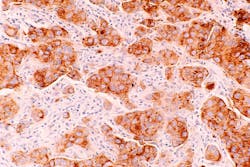A public/private collaboration led by researchers at the University of Texas at Austin has developed a new mathematical modeling technique to predict the response of tumors in breast cancer patients to treatments, such as chemotherapy, soon after treatment initiation.
Neoadjuvant therapies (NAT) are designed to shrink tumors and are often the first step in locally advanced cancer treatment before surgery is deemed necessary. Examples include chemotherapy, hormone therapy and, more recently, immunotherapy. These treatments can be very effective. However, they can also take a toll on a patient’s overall health without any guarantee of success. Developing a method to predict a patient’s response to NAT, therefore, is a crucial step forward.
“The goal is to address this unmet need by developing methods that integrate advanced MRI data with biology-based mathematical modeling to predict and optimize the response of breast cancer to NAT,” said Computational Oncologist Tom Yankeelov, Director of the Center for Computational Oncology at UT Austin’s Oden Institute for Computational Engineering and Sciences and Livestrong Cancer Institutes member, with appointments at Dell Medical School and the Cockrell School’s Department of Biomedical Engineering (BME).
Yankeelov, who led the study, described the research as the “culmination of several years of work in a public-private partnership” that included UT Austin’s Oden Institute, BME and the Livestrong Cancer Institutes at Dell Med, as well as Texas Oncology, Dell Seton Medical Center at the University of Texas, and the Austin Radiological Association.
The new method takes a different approach than other methods using a “big data” approach.
The big data approach relies on statistical inference from properties of large populations. In other words, access to large and relevant patient data sets is crucial. But it still does not guarantee better outcomes for patients because an individual patient can be quite different from the large population used to infer information about the individual.
With the new approach, Yankeelov said, “we require one set of MRI data before a patient goes on treatment, and then a second set very early after treatment starts. From those two data sets, we calibrate a mathematical model of the tumor to make a patient-specific prediction of whether the tumor will respond to the prescribed therapies.”
The research is featured in the latest edition of Nature Protocols.

